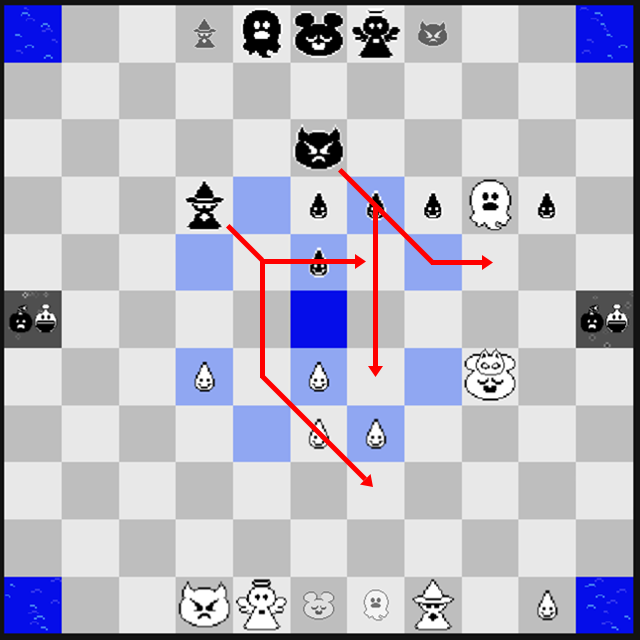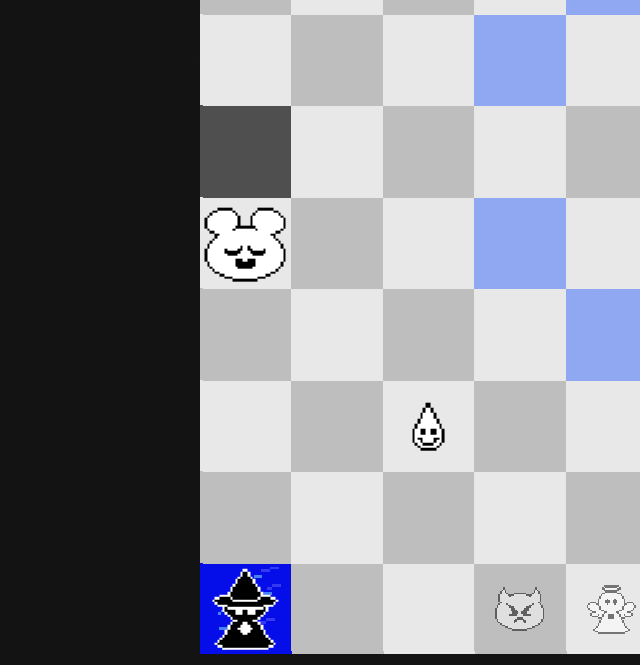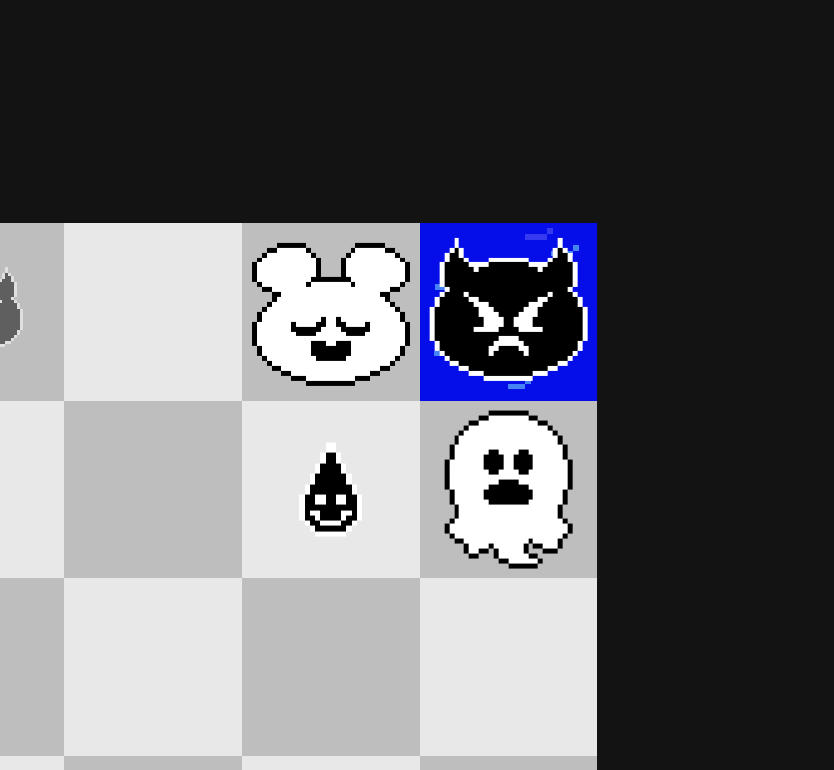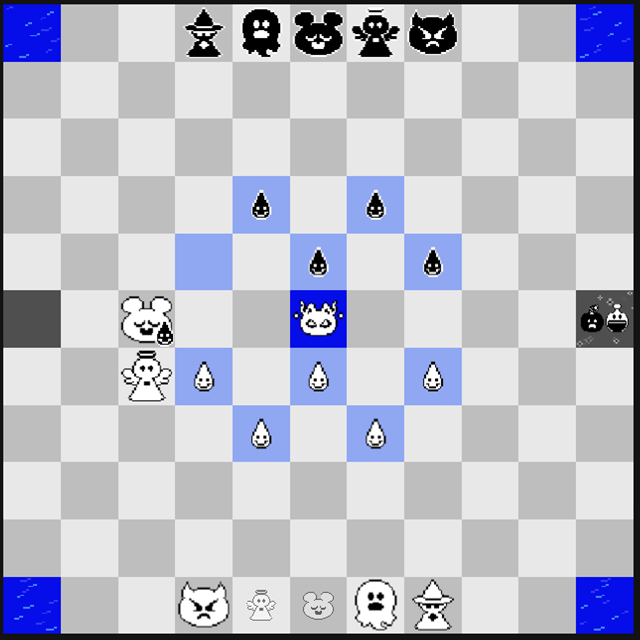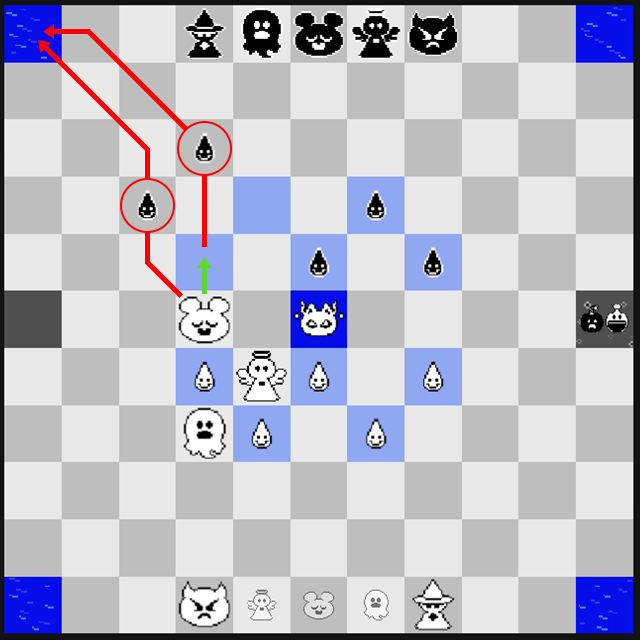📜 Mons Academy 🏫
~ 3 Strong Techniques to Look Out For ~
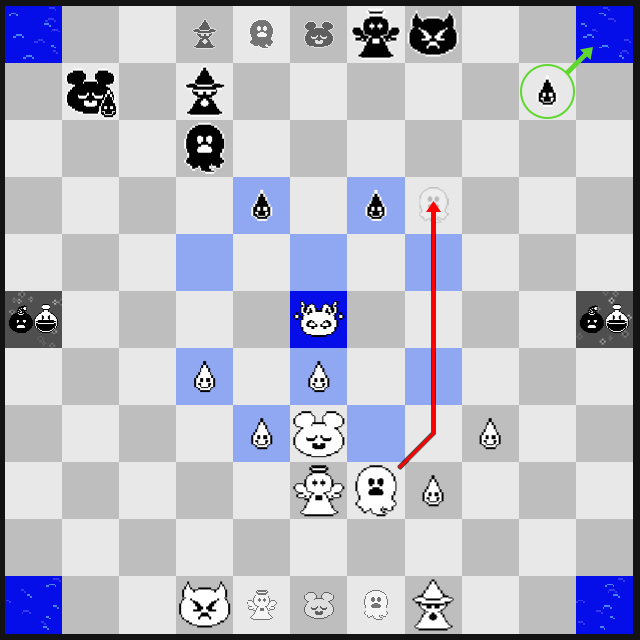
Spirit Dunking
Aside from the Drainer, Spirits are the only type of mon that is capable of moving a mana piece. Of course you can use this to score your own mana, but another option to consider is Spirit moving your opponent’s mana into their own pool. If you see a player move one of their mana to a tile adjacent to a mana pool, likely planning to nudge it in on their next turn, be sure to check if there’s any way you can get your Spirit into position to dunk it before they can. This not only prevents the 1 point they would have received, but earns 2 points for yourself in the process. It is important to note, also, that this works exactly the same way for a mana on its own or a Drainer holding a mana. If you are the one to push that Drainer into the mana pool, you will recieve the points, even if it’s in their hands! Smart positioning of the Spirit to simply threaten a Spirit Dunk can often slow an opponent’s mana collection. Being unable to move their mana adjacent to the pool means they are unable to score that mana using a mana move and must utilize their own Spirit or Drainer to push fast enough through the danger zone, burning resources- provided they are in any position to do so at all. Additionally, this thechnique and threat of it become greatly powered up if you are holding a potion. In that case, your opponent is unable to safely move a mana to within 2 tiles of a pool. And of course if you manage to acquire both potions a triple spirit move can be an incredibly scary tool. A mon can move 5 tiles and with the Spirit ability’s target range of any spaces 2 tiles away, a Spirit near the middle of the board can in some cases have the potential to threaten this technique on all four mana pools at once. Spirit Dunking can be a great way to throw a wrench in an opponent’s plans and can also be very sneaky if one is not looking out for it so be sure to watch your opponent’s Spirit and position your own mana with care accordingly. Mana Shielding & Body Blocking
In a game of Super Metal Mons, it can often be difficult to advance down the board without entering the effective range of an enemy Demon or Mystic. Because active abilities target from 2 tiles away, and players can use all 5 movements on a single mon, this creates an effective range of 7 tiles in any direction. Since the board is only 11 tiles across, this means that if an attacking mon isn’t almost all the way on the opposite side of the board as your mon, you are potentially vulnerable to being fainted. In these cases you may wish to faint their mon preemptively, simply go about your business with other pieces, or set up a bait situation. But you can also try to strategically position your other pieces- both mons and mana- in order to protect a mon you plan to use the immediate future. Depending on the boardstate, you can do this in three ways: path denial, target denial, and caging- all respectively pictured above. Because of the starting mana positions, the middle of the board will often naturally create full or almost complete walls preventing mons (especially non-Drainers who can’t move through the Super Mana space) from getting across to the other side quickly. If there is a small gap, you can plug it. For a wall to truly deny a path it cannot have any diagonal gaps and must be wider than the distance between itself and the mon you are hoping to block, otherwise normal movement may be redirected, but not at all slowed. This obviously requires a decent number of pieces clumped together, but target denial can sometimes be accomplished with only a single piece. The idea is simply to occupy the particular space(s) which your opponent’s mon needs to occupy in order to target you. Just be careful they don’t also have a potion to Spirit (re)move your blocking piece and attack in one turn! The third method is the most situational, but especially in the mana pools it is sometimes possible to fully surround an enemy mon in order to prevent them from moving. All of these methods can utilize any mon type as well as mana pieces so you will need to look at your options and choose the best approach for your situation; mons can be fainted by enemy attackers, but mana is unable to block a Drainer. Always be sure to be aware of where threats may come from and how you can move safely in the midst of them, even if it means holding back a bit or counterintuitively even moving a mana away from your own mana pools. Midline Hold
The Super Metal Mons board is 11x11 meaning, unlike Chess, there is a middle row and column and space. These middle points are especially important to be cognizant of once you realize that from any space on either midline you are always exactly 5 tiles away from 2 mana pools at once. Therefore, having a Drainer with mana in hand on a midline space is a very powerful position as it can be very difficult for your opponent to block both pools. The central Super Mana space is 5 tiles away from all 4 mana pools, but actually may be weaker due to the paths to those pools being more restrictive. From C6 for example there are numerous paths to dunk regardless of what clutter may be there, but from the very center space, there is only 1 possible path to each pool which can be blocked by single pieces. Depending on their positioning, it may also be possible to sit on the midline without a mana and simply threaten to grab one on your way to the mana pool. This can be especially effective in situations where your opponent is slowly walking a mana toward a pool while their Drainer is elsewhere, leaving it nice and open to steal and dunk in one fell swoop or where it is possible to grab two different mana making it near impossible for your opponent to prevent you getting either. That all said, the very middle of the board can be a dangerous and potentially obvious place to be. It is also possible to leave your Drainer one space back from the midline with a Spirit already waiting in range to boost them across. This can be a very sneaky technique so be sure to watch out for it from your opponent and set it up when it may be advantageous to you. This concludes our introduction to some techniques you may want to utilize and/or be on guard against... 